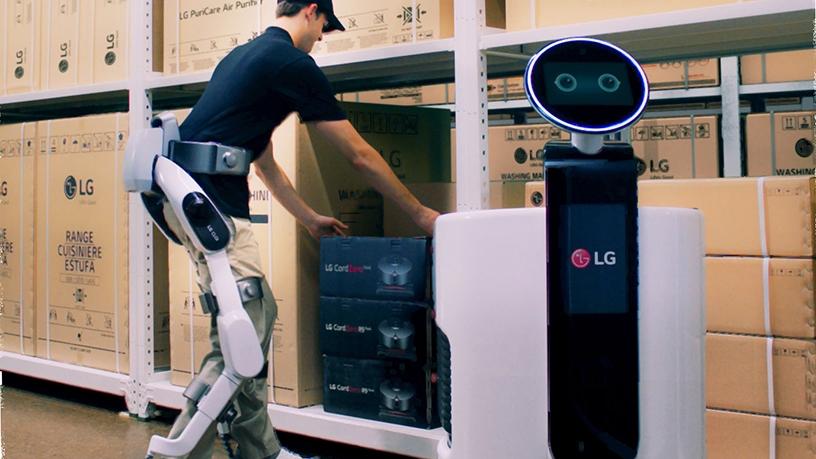
LG has developed a human-centric robot for the manufacturing, logistics and healthcare industries.
The wearable robot, known as LG CLOi SuitBot, is part of LG's CLOi range of service robots, which include a guide robot, cleaning robot and serving robot, designed to navigate airport lounges to clean up and carry items.
But unlike these robots, CLOi SuitBot is a robotic exoskeleton designed to support a user's legs to allow for more mobility and lower limb strength. It is suitable for workers in labour-intensive jobs, such as mining and manufacturing, who are required to operate heavy tools with great strength, notes LG.
The robot was designed as part of the Korean tech giant's focus on becoming a leading developer of service robots in the next decade. It will be officially unveiled to the public at IFA 2018, in Germany, this month.
"The aim of this robot is to assist individuals to be safer, with the ability to support the lower limbs that may have been impacted from normal use. It's important to us that employees are able to work in their labour-intensive environments with as much resources as possible to fulfil an effective outcome," explains Song Dae-hyun, president of LG's Home Appliance and Air Solution Company.
"LG CLOi SuitBot is evidence of our full commitment to expanding our portfolio of service robots that deliver convenience and innovation in our lives."
Designed in collaboration with Korean AI start-up, SG ROBOTICS, CLOi SuitBot uses LG's ThinQ AI software to create a comfortable fit and naturally rotating joints, to make it easy to move around in, whether the user is walking, standing or working for long periods, notes the company.
"AI technology allows LG CLOi SuitBot to learn and evolve through the recognition and analysis of biometric and environment data, measuring and analysing movements to suggest optimal movements and stances for maximum power efficiency. It also has built-in "sandal-type" shoes, which automatically adjust so the wearer can get in and out of the wearable robot more easily," explains Dae-hyun.
The robot will be rolled out globally before the end of the year.
Growing bot workforce
Tech companies globally are testing robots to carry out various tasks that could affect the services industry, which employs nearly 50% of the global workforce.
US automaker Ford is testing an upper body exoskeleton, called EksoVest, aimed at reducing strain and injuries for workers doing over-head tasks.
At the Consumer Electronics Show 2017, Hyundai and Japanese company Cyberdyne both exhibited their medical exoskeletons, designed to assist people with low mobility.
A report by Research and Markets found the AI robots market is expected to grow from $3.49 billion in 2018 to $12.36 billion by 2023, at a compound annual growth rate of 28.78%.
According to the International Federation of Robotics, sales in service robots for professional use is forecast to reach an average growth rate of 20% to 25% between 2018 and 2020.
The high adoption of robots, according to the company, is propelled by support from governments worldwide to develop modern technologies driving the growth of the different markets.
Share